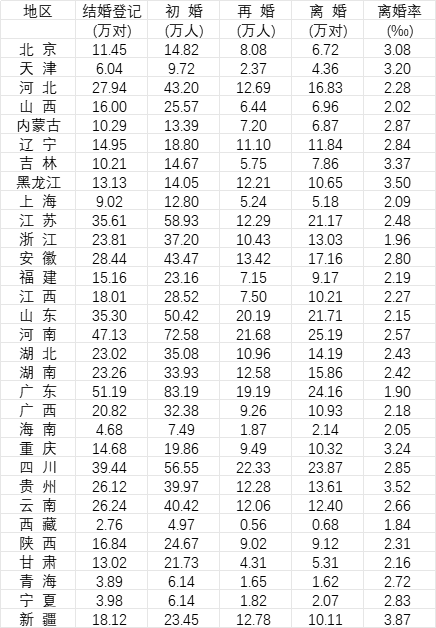投资房产是人们追求财富增值的一种方式。在投资房产中,房价涨多少才能算赚钱成为了一个热门话题。本文将通过定义、分类、举例和比较等方法,客观、专业、清晰和系统地阐述“投资房产每年涨幅 房价涨多少才算赚钱”的相关知识。

房地产行业一直以来都是人们追求投资收益的重点领域。每年房价的涨幅成为了投资者关注的焦点之一。房价涨多少才能算赚钱呢?下面将从不同角度进行分析。
【房价涨幅的定义与分类】
房价涨幅,指的是房屋价格在一定时间内的增长幅度。根据涨幅的高低,可以将房价涨幅分为低涨幅、中涨幅和高涨幅。低涨幅一般指房屋价格每年增长3%以内;中涨幅指涨幅在3%到8%之间;高涨幅则表示每年涨幅超过8%。不同的涨幅水平对投资者带来的收益也不尽相同。
【低涨幅下的投资收益】
在低涨幅下,投资房产所带来的收益较为稳定但相对较低。以每年涨幅为2%为例,假设购房成本为100万,那么十年后房价将增值20%。这意味着,投资者十年后的房产价值仅为120万。虽然收益较低,但在一些低风险投资者眼中,稳定的回报是更为重要的。
【中涨幅下的投资收益】
中涨幅下,投资房产所带来的收益已经较为可观。假设每年涨幅为5%,购房成本为100万,十年后房价将增值63.4%。这意味着,投资者十年后的房产价值将达到163.4万。中涨幅下投资收益的增长速度相对较快,吸引了更多的投资者进行房地产投资。
【高涨幅下的投资收益】
在高涨幅下,投资房产所带来的收益可以说是显著。以每年涨幅为10%为例,购房成本为100万,十年后房价将增值159.4%。这意味着,投资者十年后的房产价值将达到259.4万,收益非常可观。高涨幅所伴随的风险也相对较高,投资者应谨慎考虑高涨幅下的房地产投资。
通过以上的分析可见,投资房产每年涨幅对于投资收益的影响是巨大的。低涨幅下,投资者收益相对稳定但相对较低;中涨幅下,投资者的收益已经较为可观;而高涨幅下,投资者的收益则相对显著。投资房产需要综合考虑风险、市场环境和个人需求等因素,以做出明智的投资决策。对于投资者而言,房价涨多少才能算赚钱与个人情况息息相关,需根据自身情况进行合理的投资规划。
租金涨幅不能超过多少
租金涨幅是房地产行业中一个备受关注的话题。对于租赁市场的稳定发展和租户的合理保护,租金涨幅的控制是至关重要的。本文将从定义、分类、举例和比较等角度,客观、专业、清晰地阐述租金涨幅不能超过多少的相关知识。

1. 定义
租金涨幅是指在一定时间内,房屋租金的增长幅度。它通常通过与上一期租金进行比较来计算,并以百分数或具体金额表示。不同国家和地区对租金涨幅有着不同的限制标准,以保障租户的权益和市场的稳定。
2. 分类
根据不同的对象、范围和方式,租金涨幅可以进行如下分类:
a. 按对象:住宅租金涨幅、商业租金涨幅、工业租金涨幅等;
b. 按范围:城市租金涨幅、区域租金涨幅、全国租金涨幅等;
c. 按方式:固定涨幅、市场调节、政府干预等。
3. 举例
为了更好地理解租金涨幅不能超过多少的重要性,我们可以从如下两个方面进行举例说明:
a. 租户权益:如果租金涨幅过高,租户可能面临无法负担的情况,导致租户流失、社会不稳定等问题;
b. 市场稳定:适度的租金涨幅可以促进房屋租赁市场的健康发展,吸引更多资金投入,并增加市场竞争。
4. 比较
不同国家和地区对于租金涨幅的控制有着不同的政策和标准。某些国家会通过法律或政府干预的方式来限制租金涨幅,以保障租户的权益和市场的平衡;而其他一些国家则更加倾向于市场调节,鼓励供需双方自主协商租金。各种方式都有其利弊,选择适合当地实际情况的租金涨幅限制方式是至关重要的。
通过本文的阐述,我们可以了解到租金涨幅不能超过多少的相关知识。租金涨幅的控制对租赁市场的稳定发展和租户的合理保护至关重要。在制定和执行租金涨幅限制政策时,需要综合考虑租户权益、市场稳定和实际情况等因素。只有合理控制租金涨幅,才能保障租户权益,维护市场秩序,促进房地产行业的可持续发展。
房价涨多少才算赚钱

对于投资者而言,房地产是一种常见的投资手段。对于那些考虑购买房产的人来说,他们常问自己一个问题:“房价涨多少才算赚钱?”本文将以客观、专业、清晰和系统的方式探讨这个问题,主要运用定义、分类、举例和比较等方法来阐述相关的知识。
一、定义房价涨幅的基准
房价涨多少才算赚钱,首先需要确定涨幅的基准。房价涨幅可基于过去的购买价格,也可以与其他投资渠道进行比较。当房价的涨幅超过通货膨胀率并且高于其他投资渠道时,可以认为买房赚钱。
二、房价涨幅的分类
要回答“房价涨多少才算赚钱”的问题,我们可以将房价涨幅分为几个不同的分类。单年房价涨幅,长期房价涨幅和地区性房价涨幅。这些分类可以在不同情况下提供不同的答案。
1. 单年房价涨幅
当房价在短时间内上涨时,通常认为这是一种快速的投资回报。对于不同地区和不同类型的房产来说,单年房价涨幅的合理水平也会有所不同。在发展迅猛的经济中心城市,单年房价涨幅可能高于其他地区。可以根据所在地区的市场情况和经济发展水平判断单年房价涨幅的合理范围。
2. 长期房价涨幅
长期投资者通常更关注房价的长期涨幅。对于购买房产作为长期投资的人来说,房产的增值潜力和稳定性是最重要的考量因素。房价的长期涨幅应该能够跟上通货膨胀率,并且有所溢价。如果通货膨胀率为2%,那么长期房价涨幅应该在2%以上才能算赚钱。
3. 地区性房价涨幅
考虑到不同区域的经济发展状况和人口流动情况,地区性房价涨幅也可能不同。一些二线城市在经济发展和基础设施建设方面有巨大潜力,可能会出现高于平均水平的房价涨幅。对于不同地区而言,房价涨幅的合理范围也是基于当地的市场情况和经济背景来判断的。
要回答“房价涨多少才算赚钱”的问题并没有一个固定的答案。涨幅的判断应根据涨幅的基准、时间范围和地区情况来考量。只有当房价涨幅超过通货膨胀率并且高于其他投资渠道,并且符合当地市场情况时,才能算赚钱。投资者在购买房产前应充分研究市场和综合考虑各个因素,以做出明智的投资决策。
How much does the increase in house prices count as making money?
Introduction
For investors, real estate is a common investment method. However, for those considering buying property, they often ask themselves a question "How much does the increase in house prices count as making money?" This article will explore this question objectively, professionally, clearly, and systematically, using methods such as definition, classification, examples, and comparisons to explain the relevant knowledge.
Main Body
I. Defining the benchmark for house price increases
To determine how much the increase in house prices counts as making money, it is important to establish a benchmark for the increase. Generally, house price increases can be based on the past purchase price or compared with other investment channels. When the increase in house prices exceeds the inflation rate and outperforms other investment channels, it can be considered profitable.
II. Classifying house price increases
To answer the question of how much the increase in house prices counts as making money, we can classify house price increases into different categories. First, there is the annual house price increase, followed by long-term house price increases and regional house price increases. These classifications can provide different answers based on different scenarios.
1. Annual house price increase
When house prices rise within a short period of time, it is often considered a rapid return on investment. However, the reasonable level of annual house price increases can vary depending on the region and type of property. For example, in rapidly developing economic centers, the annual house price increase may be higher than in other regions. Therefore, the reasonable range of annual house price increases can be judged based on the local market conditions and economic development level.
2. Long-term house price increase
Long-term investors usually focus more on the long-term increase in house prices. For those who purchase properties as long-term investments, the potential for appreciation and stability are the most important factors to consider. Generally, the long-term increase in house prices should keep up with the inflation rate and have some premium. For example, if the inflation rate is 2%, the long-term increase in house prices should be above 2% to be considered profitable.
3. Regional house price increase
Considering the economic development and population mobility in different regions, regional house price increases can also vary. For example, some second-tier cities have great potential in terms of economic development and infrastructure construction, and may experience house price increases higher than the average level. Therefore, the reasonable range of house price increases also depends on the local market conditions and economic background.
Conclusion
In conclusion, there is no fixed answer to the question of how much the increase in house prices counts as making money. The judgment of the increase should be based on the benchmark, time range, and regional situation. It can be considered profitable when the increase in house prices exceeds the inflation rate, outperforms other investment channels, and aligns with the local market conditions. Therefore, investors should thoroughly research the market and consider various factors before purchasing property to make wise investment decisions.

























